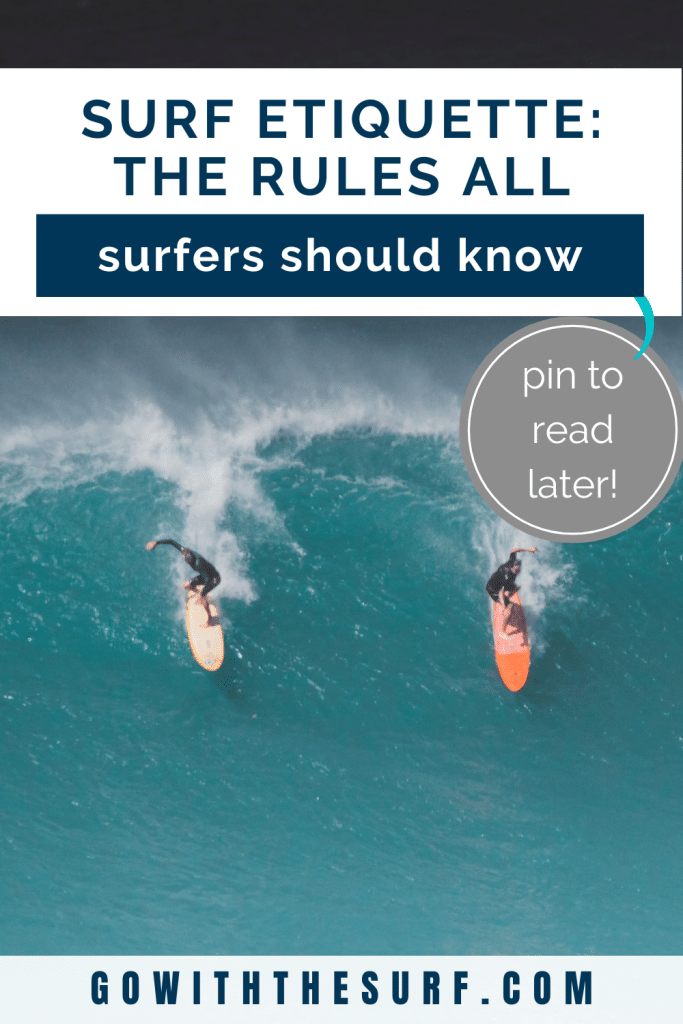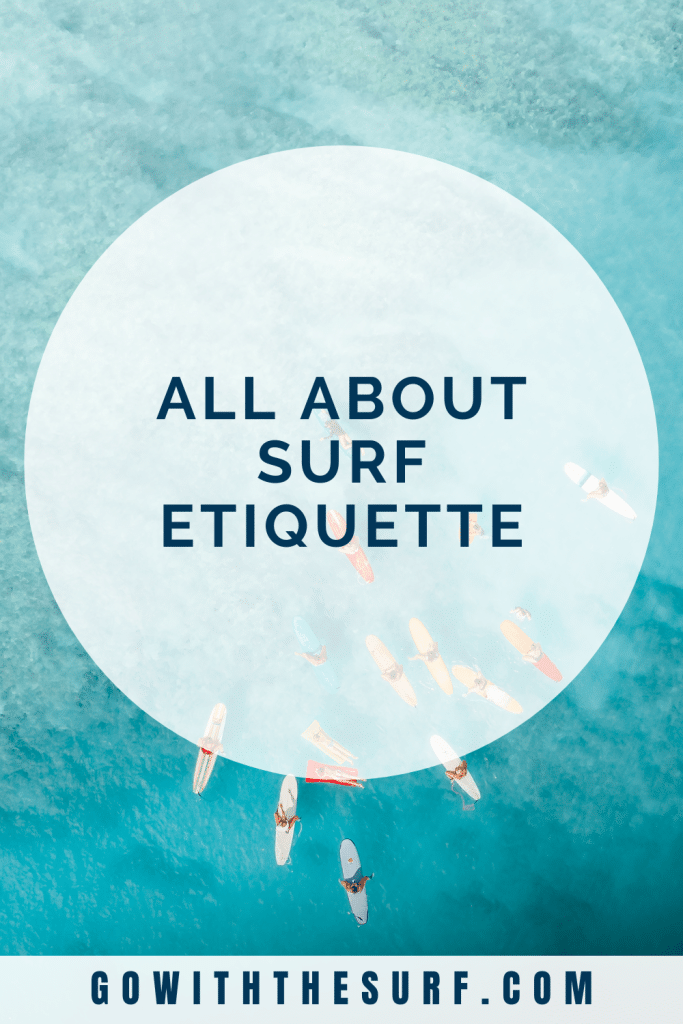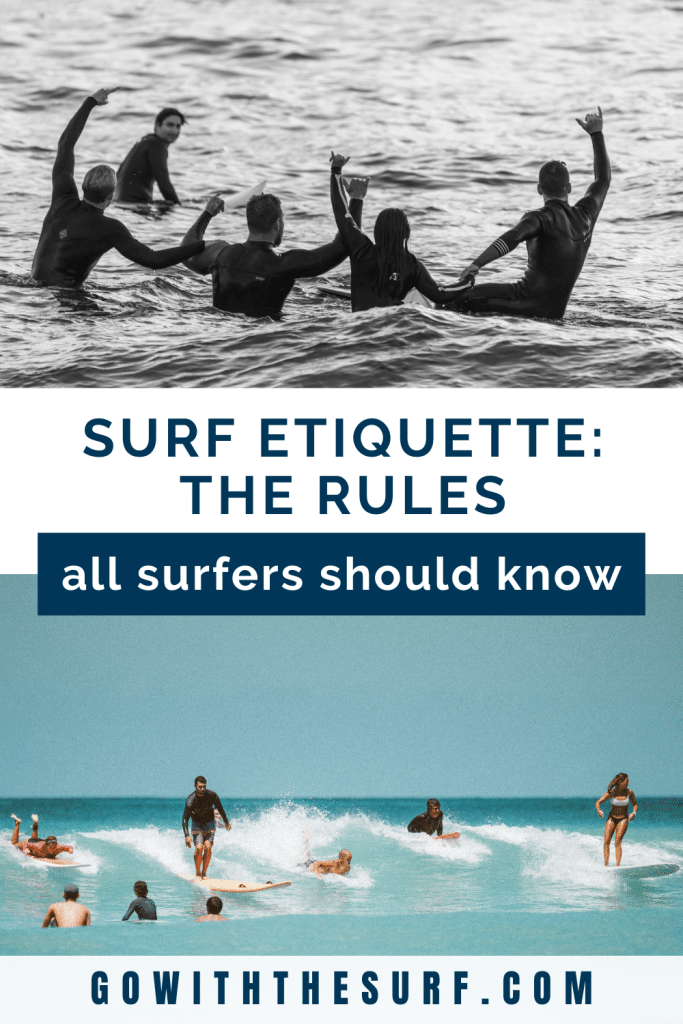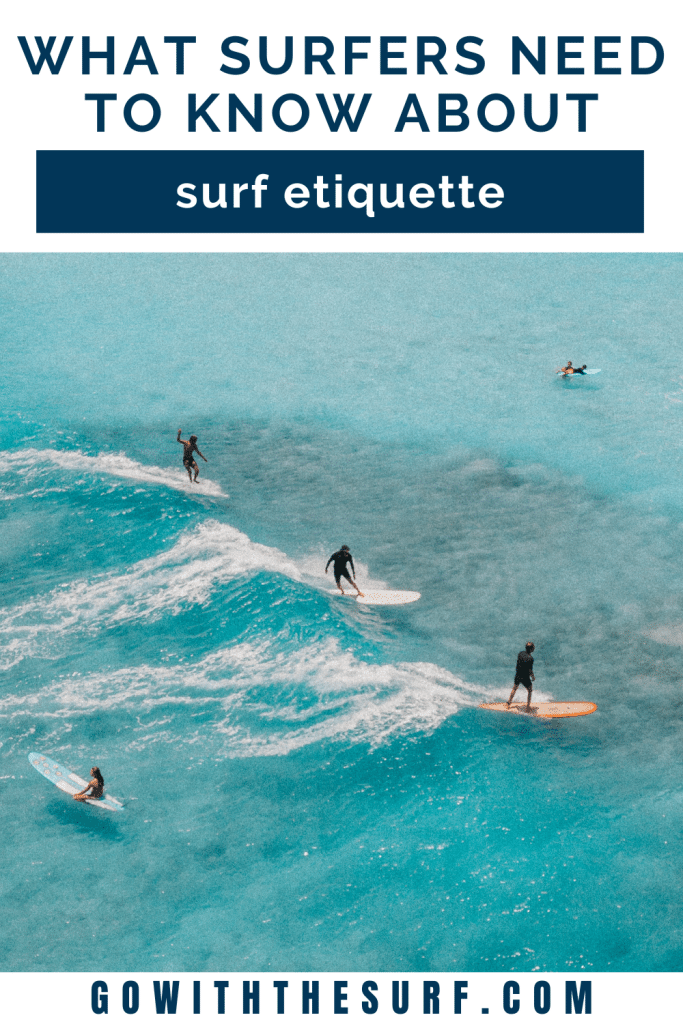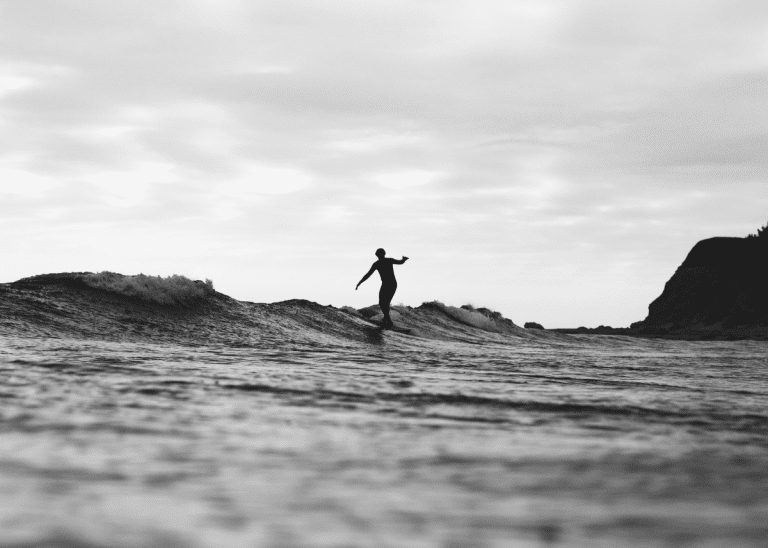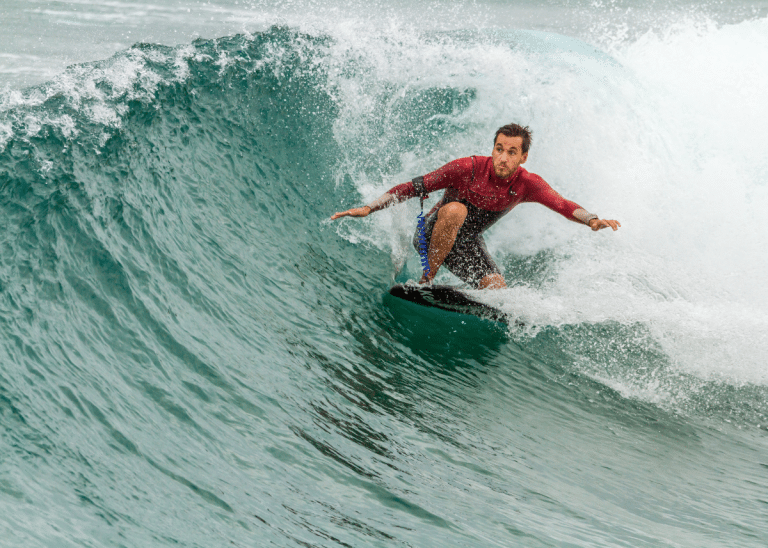The Ultimate Guide to Surf Etiquette: What Every Surfer Needs to Know
Being a newbie surfer out on the waves can be intimidating. There’s nothing like being a first-time surfer and seeing so many pros out on the waves. You should’ve seen me on my first surf lesson! 🤣
Not only are you trying to remember how to pop-up and watching for potential waves to ride on, you’re doing so with a lot of other surfers trying to catch the same waves.
But there lies a fundamental aspect that every surfer must abide by – surf etiquette.
Surf etiquette is the unspoken code of conduct that is a shared understanding and respect for the ocean and fellow surfers. These guidelines not only promote a sense of community (which is already strong among surfers) but they also help prevent accidents and conflicts in the water.
Before you start practicing your pop-up on the waves, familiarize yourself with the following unwritten rules of surf etiquette. These rules will most likely not be displayed at your local surf spots, but this blog post will help you. Thankfully I learned about surf etiquette during my many surf lessons!
This post contains affiliate links, which means I receive a small commission, at no extra cost to you, if you make a purchase using this link. Please see my disclosure for more details.
1. Respect the Lineup
Surfing etiquette is deeply ingrained in the surf culture, and one of the fundamental rules to remember is to respect the lineup. The lineup refers to the area where surfers wait to catch waves. This maintains order and ensures everyone has a fair chance to enjoy the waves.
Wait Your Turn
When in the lineup, it’s essential to wait your turn patiently. The rule is usually first come, first served. Respect the order of arrival and avoid paddling around or cutting in line. This ensures fairness and prevents unnecessary conflicts among surfers.
Take Turns
Taking turns in the lineup is a golden rule. Once it’s your turn to catch a wave, paddle confidently and commit to it. Respect the space of others and give way if another surfer is in a better position for the wave. Remember, sharing is caring in the lineup.
Avoid Dropping In
Dropping in is when a surfer takes off on a wave that is already being surfed. Dropping in on someone’s wave is very disrespectful and is a serious breach of etiquette in surfing. And it could label you as a kook. To avoid this, always check your surroundings before paddling for a wave. Make sure you’re not inadvertently stealing someone else’s wave. This can lead to frustration and spoil the vibe in the lineup.
Paddling Rules
In crowded lineups, paddling battles can sometimes occur when multiple surfers aim for the same wave. It’s essential to handle these situations with respect and communication. Avoid aggressive behaviors and try to find a peaceful resolution to share the waves harmoniously.
When paddling out, do not interfere with other surfers riding waves. Always paddle around the lineup, not through it – this avoids disrupting the peak zone and the paths of active surfers.

2. Know Your Ability Level
Knowing how good (or bad) you are at surfing is also important – for you and your fellow surfers. Knowing your limits can prevent accidents and ensure that everyone has a good time in the water.
Assess Your Skill Level
Assessing your skill level accurately is the first step in practicing good surf etiquette. Be honest with yourself about your abilities and experience in the water. Choose waves that match your skill level to avoid hurting yourself and others.
Avoid Crowded Spots as a Beginner
As a beginner, it’s wise to steer clear of overcrowded surf spots. These areas can be intimidating for newbie surfers (ask me how I know) and increase the likelihood of collisions or accidents. Opt for less congested areas where you can practice without feeling overwhelmed.
Yield to Experienced Surfers
Respecting the hierarchy in the lineup is a fundamental part of surf etiquette. Yielding to more experienced surfers not only shows good manners but also enhances safety in the water. Wait your turn and observe how others handle the waves before taking your own.
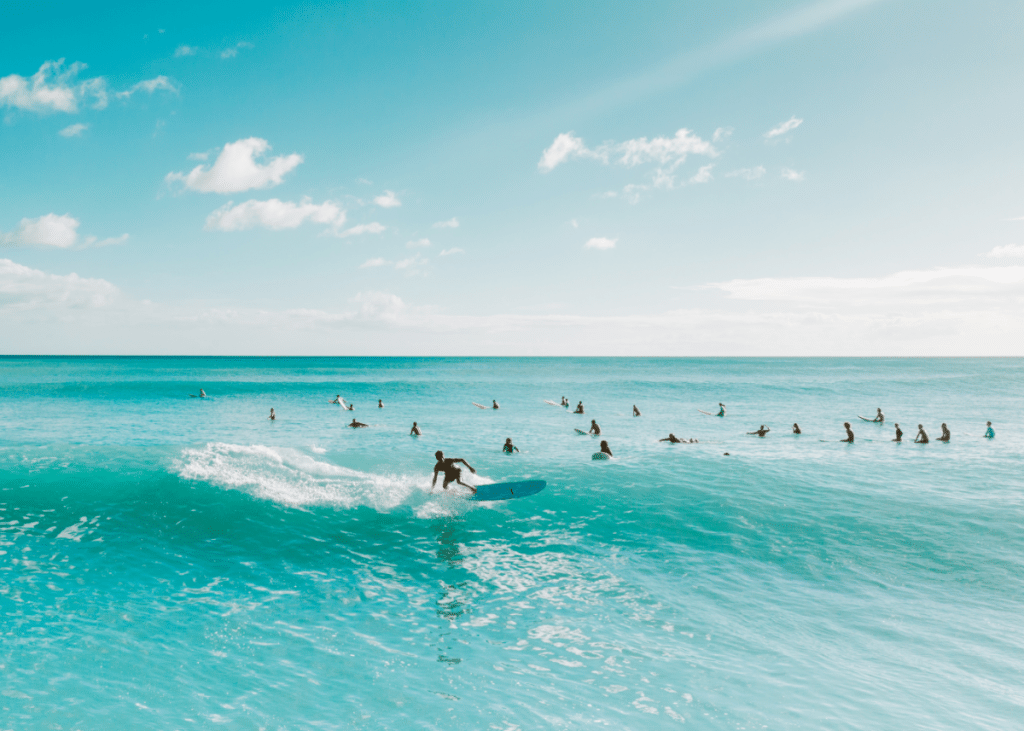
3. Be Aware of Your Surroundings
Surf etiquette involves being acutely aware of your surroundings. Understand the dynamics of the ocean and the movements of fellow surfers.
Strategies to Avoid Collisions
To steer clear of collisions while surfing, maintain a safe distance from other surfers. Always yield the right of way to the surfer closest to the peak of the wave. Use common sense such as looking both ways before taking off on a wave and communicating through hand signals.
Communicate with Hand Signals
Verbal communication can be challenging in crowded lineups. Thus, using hand signals can be an effective way to communicate with other surfers. Signals like pointing to indicate direction or waving to pass on a wave can prevent misunderstandings. This ensures smooth interactions in the water.
Staying Clear When Not Riding
When you’re not actively riding a wave, stay clear of the lineup’s main peak to avoid hindering other surfers’ rides. Stay on the perimeter when waiting for your turn and catch your breath!
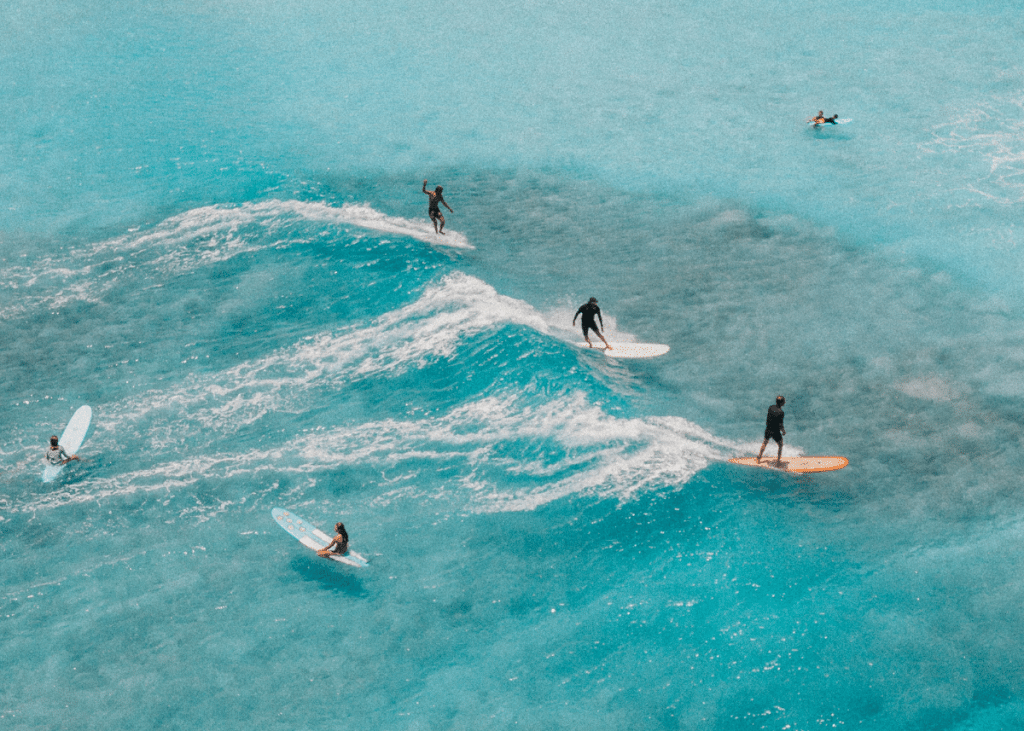
4. Respect the Locals
Local surf culture holds a significant place in the community. As a visitor or newbie, showing respect can go a long way in fostering positive relationships and experiences.
Engage with Local Surfers
Engaging respectfully with local surfers. Take the time to observe and understand the lineup dynamics, tuning into the rhythm of the waves and the established surfer hierarchy. By showing respect for those who frequent the area, you not only show good manners but also your willingness to create a harmonious surfing environment.
Embrace Humility and Courtesy
Approaching local surf spots with humility and courtesy can make a world of difference in your surfing experience. Acknowledge that locals have a deep connection to the waves and the community. Always approach interactions with a friendly and positive attitude. Being courteous, sharing waves, and expressing gratitude can help you integrate into the local surf scene.
Avoid Territorial Disputes
When it comes to surfing, territorial disputes can arise when boundaries are not respected. There are a few ways to avoid these potential conflicts. Maintain a respectful distance from other surfers, avoid dropping in on someone else’s wave, and be mindful of your impact on the lineup. Focus on respect and communication and you can steer clear of unnecessary conflicts. At the end of the day, we’re all there to enjoy the waves!
Contribute Positively to the Surf Community
Contributing positively to the surf community involves more than just following the rules. It’s about fostering a sense of camaraderie and stewardship. Get involved in beach clean-ups, support local surf businesses, and engage in activities that benefit the ocean and the surfing environment.
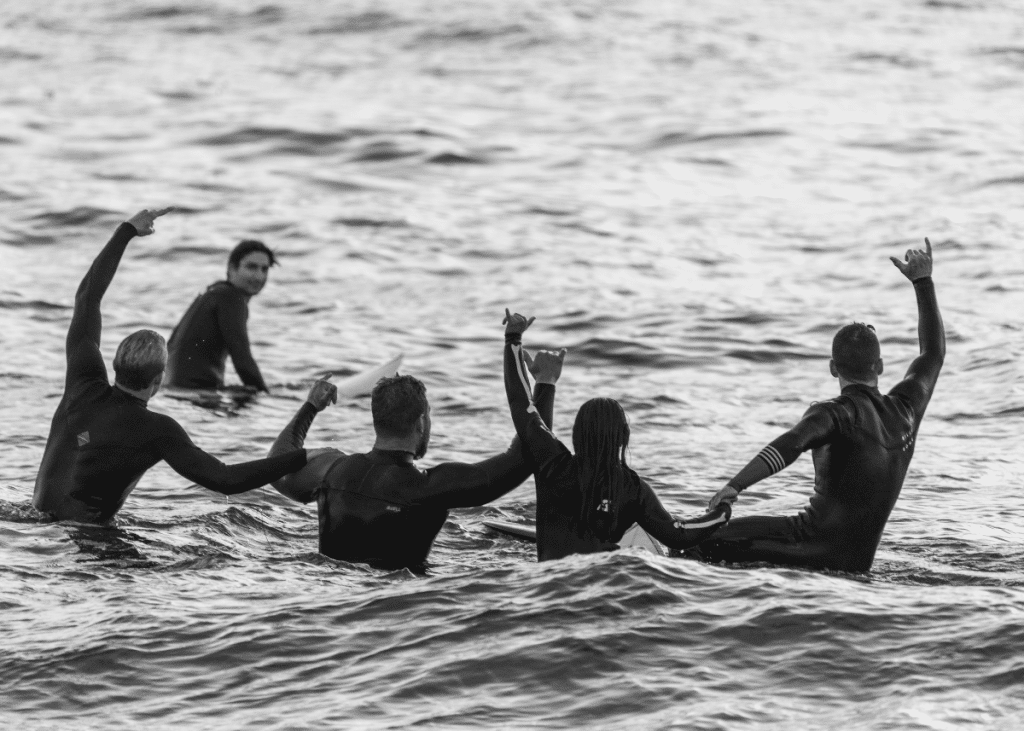
5. Take Care of the Environment
Surfing is also about being mindful of the natural surroundings you enjoy. Taking care of the environment is crucial for the sustainability of oceans and beaches for future generations. By following surf etiquette and adopting eco-friendly surfing, you can contribute to the preservation of marine ecosystems.
Dispose of Trash Responsibly
There’s nothing worse than seeing lots of trash as you head out to the waves. To protect marine life and keep the oceans and beaches clean, properly dispose of trash and other waste. Consider carrying a trash bag with you to collect any litter you find on the beach or in the water. Dispose of waste in designated bins and recycle whenever possible. By leaving only footprints and taking your trash with you, you help maintain the beauty of the surf spot for everyone to enjoy.
Minimize Your Carbon Footprint
Reducing your carbon footprint while surfing can have a positive impact on the environment. Consider carpooling or using eco-friendly transportation to reach the beach. Choose surf gear made from sustainable materials and support brands that prioritize environmental conservation. Small changes in your surfing routine can lead to significant benefits for our planet!
Support Conservation Efforts
Get involved in local beach cleanups, environmental campaigns, or conservation organizations focused on protecting oceans and marine life. By volunteering your time or donating to relevant causes, you actively contribute to safeguarding the environment. Educate yourself and others about the importance of marine conservation to inspire a community of responsible surfers dedicated to preserving our natural resources.

FAQs on Surf Etiquette
What should you do if someone drops in on your wave?
When someone drops in on your wave, it can be frustrating, but try to stay calm and avoid confrontation. I know, I know. This is easier said than done. Signal your presence by calling out “I’ve got it!” or “On your left/right!” to alert the surfer. Maintaining a friendly attitude and clear communication can prevent conflicts in the lineup and promote a harmonious surfing experience for everyone.
How can you handle aggression in the lineup?
Encountering aggression in the lineup is not uncommon, but it’s vital to respond with patience and respect. If you find yourself in a tense situation, try to de-escalate by staying composed and avoiding escalation. Remember that surfing is meant to be a fun and relaxing activity. Confronting aggression with positivity can diffuse tensions and maintain a friendly atmosphere in the water.
What are the rights of non-locals at surf spots?
Respecting the rights of non-locals at surf spots is crucial for fostering a welcoming surfing community. As a visitor to a surf spot, be mindful of the locals who frequent the area and adhere to any established rules or customs. Avoid overcrowding the lineup, show consideration for others, and embrace the local culture to promote a positive surfing experience for both residents and visitors.
Who has the right of way on a wave?
The surfer closest to the peak of the breaking wave has the right of way. This means if you’re paddling for a wave and someone is already up and riding closer to where the wave is breaking, they have priority.
What should I do if I’m paddling out and someone’s riding a wave?
Always paddle towards the white water when you see someone riding a wave towards you. This keeps you out of their path and avoids disrupting their ride.
How close should I paddle to another surfer?
Keep a respectful distance, generally about 15 feet or more, when paddling out. This helps prevent collisions and gives everyone ample space to maneuver.
What’s the etiquette for a crowded lineup?
In crowded lineups, take turns catching waves. After you ride a wave, head to the end of the lineup to wait your turn again. This rotation helps keep the peace and ensures everyone gets a chance to surf.
Should I apologize if I accidentally drop in on someone?
Yes, if you make a mistake or accidentally drop in on someone, a simple apology can go a long way in maintaining harmony in the water.
Can I chat with other surfers in the lineup?
While it’s fine to make conversation, always be aware of your surroundings and ready to take your turn. Keep chit-chat light and always respect if others prefer to stay quiet.

Try Out Your Surf Etiquette
Whew that was a lot! At the end of the day, surf etiquette is all about respect and consideration for others in the water. Read more about surf etiquette and keep these guidelines in mind. You can ensure a safe and enjoyable surfing experience for yourself and other surfers!
Can you think of any other surf etiquette rule? Drop a comment below!

Anh
Anh recently retired at the age of 35 and moved to a small surf town in Portugal in 2023. She started surfing as a hobby, but she fell in love with the water sport. She shares her tips and tricks with fellow surfers at Go With the Surf.


